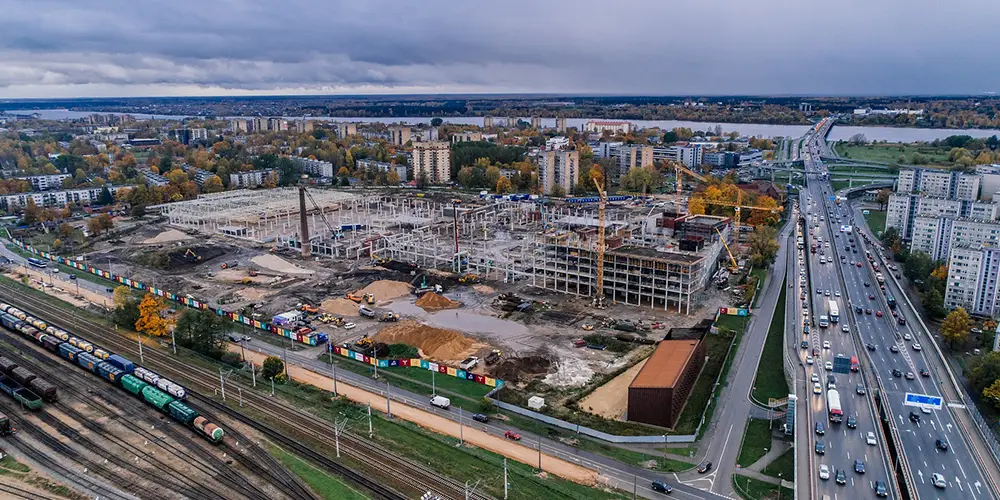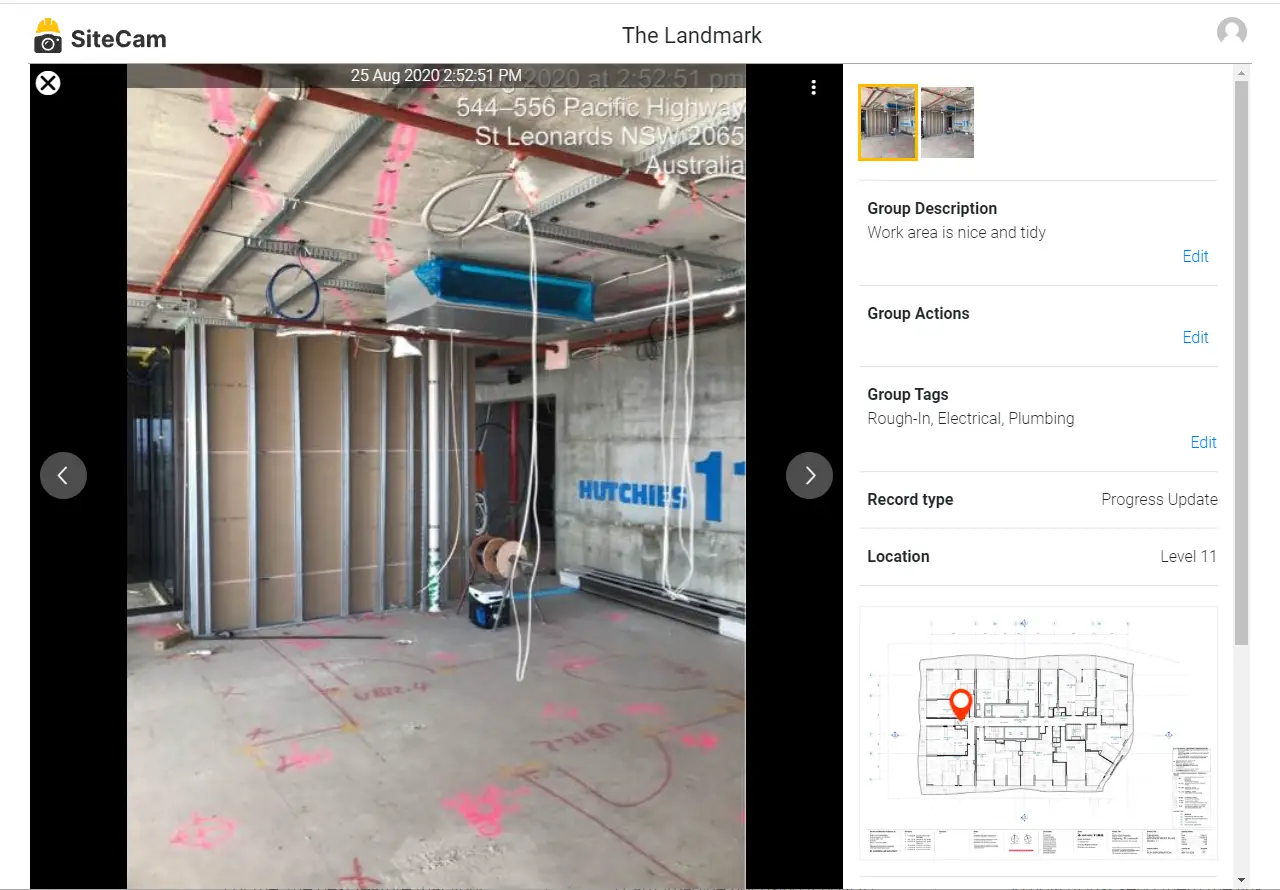Practical Guide to LiDAR for Construction

LiDAR, short for “light detection and ranging” is a technolgy that has been used by NASA for mapping the moon and by archiologists to uncover hidden pyramids and ancient cities in dense jungles. It has also established itself as an invaluable tool in the construction industry with a wide range of practical applications that facilitate more efficient, safe, and innovative working practices.
Table of Contents
How does LiDAR work?
To put it simply, LiDAR works by emitting laser beams from the LiDAR device and measuring the time it takes for them to return after hitting an object or surface. This process generates a dense set of data points, known as a point cloud, representing the surveyed environment. This data can then be further processed to create a detailed 3D mesh of the environment.
How Accurate is LiDAR?
Generally speaking, LiDAR is considered very accurate. However, think of LiDAR’s accuracy and precision like a game of darts. Accuracy is about how close you can get your darts to the bullseye. In other words, this is how close the measurements are to the real values of the surveyed area. The accuracy can be affected by various factors including the quality of the LiDAR equipment, environmental conditions, and the altitude from which the scan is conducted.
On the other hand, precision refers to how closely grouped your darts are, regardless of their distance from the bullseye. Basically, it’s how consistent the measurements are spaced out over repeated surveys. High-end LiDAR systems can be both accurate and precise, hitting that bullseye with a tight group of darts every time, translating to a range of about 5-50mm (0.2-2 inches). Meanwhile, more accessible options like iPhone LiDAR offer decent accuracy at about 100mm (4 inches), making it a handy tool for less demanding applications.
Applications of LiDAR in Construction
Project Planning and Surveying
LiDAR can be useful right from the beginning of a project, offering detailed site analysis and topographic surveys. It can help architects and engineers grasp the land’s topography, and evaluating factors like terrain stability and flooding risks. Additionally, it can assess the site’s suitability considering various parameters including vegetation, slope gradient, and existing structures, a step crucial in informed decision-making.
Predicting Project Costs
One of LiDAR’s standout features is its ability to facilitate more accurate predictions of project costs. It enables project managers to better plan budgets, assessing the required tools, materials, and machinery ahead of time, thus reducing the risk of unforeseen expenses cropping up in the later stages.
As-built Inspection
In construction, verifying that the work completed aligns with the planned designs is crucial. This is where as-built inspections come into play. LiDAR facilitates these inspections by creating accurate 3D models of the final construction, allowing teams to easily compare it with the original plans. It identifies discrepancies and ensures that the structure meets the predetermined requirements. By highlighting any deviations early on, it aids in rectifying issues promptly, ensuring the project’s success and reducing the risk of costly future alterations.
Heritage Buildings and Renovations
LiDAR offers a non-invasive method to survey and analyze historical structures meticulously, helping in capturing intricate details which are essential in restoration projects. Moreover, it aids in detecting areas in existing buildings that require renovation, providing a detailed insight into the current condition of structures, and helping in planning renovations effectively.
Monitoring and Maintenance
Beyond the planning stage, LiDAR serves as a vigilant overseer, monitoring conditions to identify potential risks of deformation or collapse, flagging areas in need of renovation or reinforcement. This technology is instrumental in both new projects and renovations, helping teams to stay ahead of maintenance needs and ensure the longevity of structures
How much does LiDAR Cost?
LiDAR comes with a wide price range depending on the system and its capability. On the basic/affordable end, you have smartphone-integrated LiDARs, such an iPhone Pro or iPad Pro. These offer a convenient entry into the world of 3D scanning, suitable for preliminary surveys and smaller projects where high precision is not a requirement.
Stepping up, prosumer LiDAR systems may cost between $5,000 and $50,000, offering more detailed data collection. Products in this range include the DJI Zenmuse L1 and the Velodyne Puck series which provide a substantial upgrade in terms of accuracy and data detail, making them suitable for more serious applications, including detailed surveying and 3D modeling of moderate-sized areas.
At the top end of the spectrum, professional LIDAR systems start at around $50,000 and can go up to several hundred thousand dollars. Devices like the RIEGL VZ-400i and Leica Pegasus:Two Ultimate offer superior accuracy and functionalities, catering to large-scale projects and offering the highest levels of precision and detail available in the market. These high-end systems are generally utilized in critical infrastructure projects, detailed topographical surveys, and other endeavors where a meticulous level of data accuracy is indispensable.
Best LiDAR Scanner Apps
If you have access to an iPhone Pro or iPad Pro with a LiDAR sensor, below are some great apps available on the AppStore to scan and generate 3D models.
Polycam
Polycam offers fast and efficient 3D scanning utilizing LiDAR technology integrated into iOS devices. The app allows for the creation of color 3D scans, which can be exported in various formats for further processing in other software. It stands out for its ease of use and swift processing, making it a suitable choice for AEC professionals looking for a quick scanning solution.
SiteScape
Specifically tailored for the AEC industry, SiteScape leverages LiDAR technology to create detailed 3D models of construction sites, helping in site analysis and planning. It’s a potent tool for construction professionals to streamline site surveys and enhance project visualization.
3D Scanner App
3D Scanner App is user-friendly and ideal for scanning objects of various sizes, making it a great tool for quick scans and preliminary project surveys.
Streamline Site Photos with SiteCam
LiDAR is a fantastic technology that can help you collect accurate spacial data from the field. If you are looking for other ways to streamline your work on a construction site, consider trying SiteCam for free! SiteCam helps your team collect, organize and share site photos. Sign Up here.

Related Articles
- Project Management for Architects
- Improving Photo Documentation for UK’s Building Safety Act 2022
- Guide to Concrete Slab Inspections
- The Importance of Photo Documentation in Construction
- Construction Site Inspections – A Complete Guide
- Architect’s Guide to Site Visits and Observations
- What is rough-in stage in construction?
- 10 tips for taking better site photos
- How to be a great building cadet